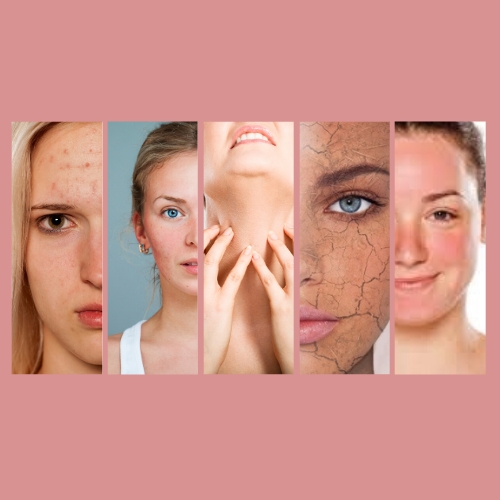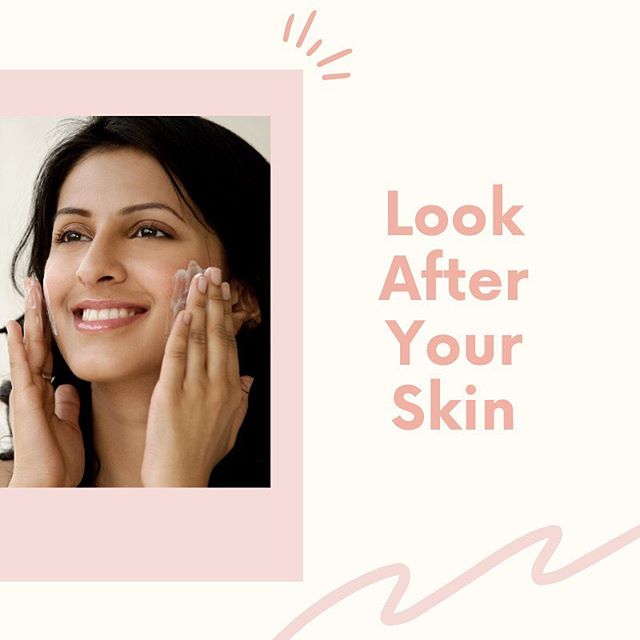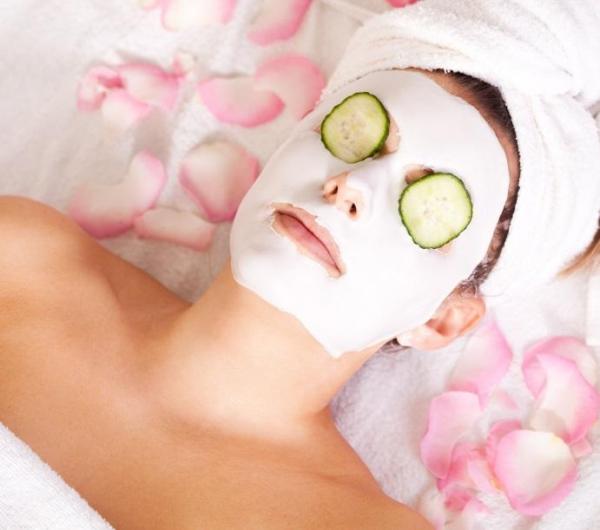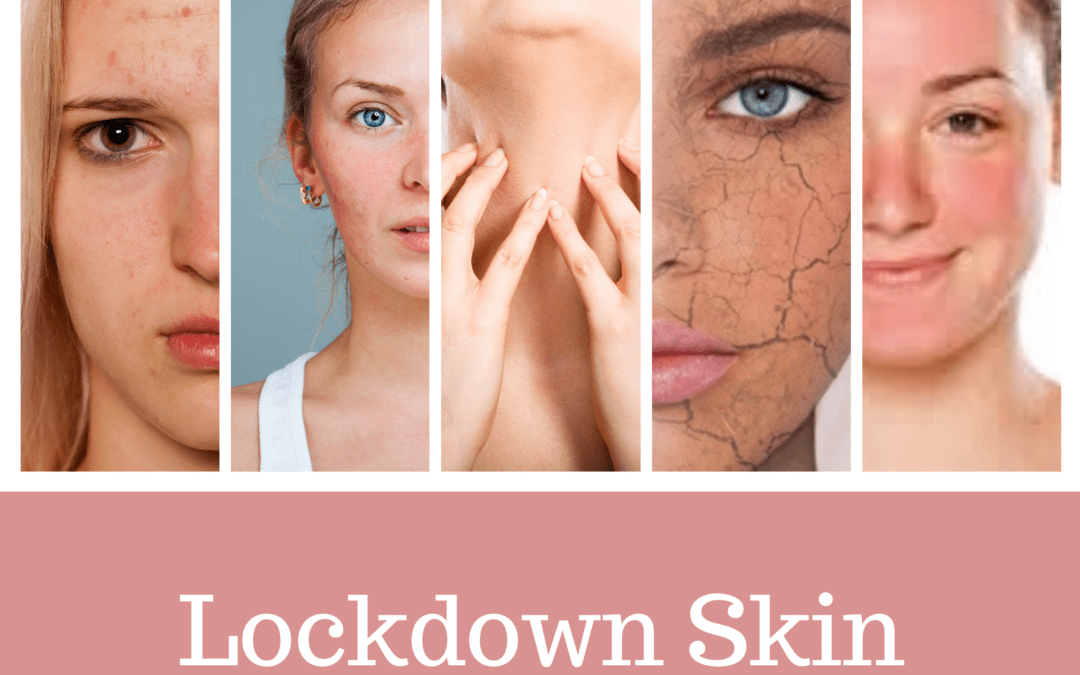Maybe it’s just me, maybe you also assumed your skin would be the best it’s ever looked in isolation.
Most of us hoped maybe even prayed for a small silver lining to our pretty crummy new normal – that our skin would thrive now that we were stuck at home and not wearing makeup every day and maybe finally commit that extra time in the morning and evening to commit to that 1,2,3,4-step skincare routine.
We wearing more layers of moisturiser than ever before, but she’s dry and thirsty. All of a sudden, pimples have popped up where there haven’t been any in ages. Rather than glowing like a lockdown goddess, skin looks dull and a bit red, and feels randomly itchy for no good reason. Frankly, maybe you are like me, my skin looks awful right now and up until this week, I didn’t know why it wasn’t enjoying isolation very much at all.
The answer? Well lets call it “Lockdown Skin”. Yep, it’s a thing. Let’s break it down.
So what is lockdown skin?

Lockdown skin is basically skin that’s changing as a result of our changing lifestyles and emotional wellbeing during this COVID-19 lockdown and beyond. Just as we’re making sense of how coronavirus is impacting our livelihoods, daily routines, work, finances, relationships, and physical and psychological health, our skin is kind of confused, too.
Lockdown skin could range from some finding they keep breaking out in a rash, or their rosacea, redness or sensitivity is flaring up big time. Others it will look like angry hormonal acne or pimples in places you don’t normally get pimples.
Maybe your skin feels tight and dry, even though you’re doing All the things and probably a little more than usual. Or maybe, like me, you’ve got a delightful mishmash of all of the above. Why is my skin not looking great in isolation? Well there are a few reasons your skin might not look and feel it’s best right now:
1. Increased stress.

Stress is the big one because it increases the production of cortisol, a type of steroid hormone that can cause acne break outs and rough-textured skin. It doesn’t have a definitive affect on your oestrogen and progesterone levels but it’s a short term hormone that’s secreted during periods of stress, and we assume that’s part of why people’s skin is playing up. Along with this, stress causes inflammation in the body, which can manifest as rosacea flare ups, acne flare ups, IBS and other gut issues. The other thing about stress during these times is, unconscious stress counts too. Whether you realise it, small changes in our lifestyles like not being able to see people, feeling restricted in your home and general anxieties about what we can and can’t do are stressful and can impact your skin.
2. Change in diet.

This one’s kind of obvious – staying at home all day, every day affects what we’re eating, which in turn affects our skin. Easy access to your fridge and pantry rather than eating a packed lunch, and leaning towards easy comfort foods like pasta, toast and cereal over veggies equals changes in your skin.
3. Less exercise.

Lockdown = less exercise = less blood flow to the skin to reduce inflammation = increased redness, pimples etc. Yes, most of us have taken up long walks to kill time and escape the house. It’s one thing to be outside in fresh air, which is great for your skin, but sweating is a way we detox. When we sweat, blood circulates and comes to the surface, and blood has all the good stuff in it. Exercise is a great way to get oxygen and nutrients to the skin, so if your exercise routine has changed, this could be impacting your skin, too.
How to treat Lockdown skin
Here are some things you can do to improve your skin if it’s bothering you. Oh, and what you 100 per cent should not do or spend your money on.
OK cool, so now I know why my skin doesn’t look great, but what can I do about it? Excellent question.
(Not because what our skin looks like is the most urgent thing to worry about right now, but because it can have an impact on the way we feel about ourselves. And we all deserve to feel good about ourselves at the moment.)

1. Know that lockdown skin, just like COVID-19, won’t last forever.
It doesn’t help that we’re now looking at ourselves more than we normally would (thanks video calls), but accepting that changes in our skin are almost inevitable given the world we’re living in helps to put things into perspective.
Rather than feeling overwhelmed or down about your skin, know it will settle down and you can ride it out. Everyone is going through weird changes and it’s OK if your skin isn’t looking the best at the moment.
2. Keep your skincare routine simple, but powerful.
Now is an excellent time to focus on building a great skincare routine, but know it doesn’t have to involve the kitchen sink to be effective. In other words, don’t put every skincare product you own on your face at the same time.
The foundations of any great skincare routine are a gentle cleanser (avoids foams), a moisturiser and SPF. Then, choose a serum and/or chemical exfoliant to suit your specific needs.
Here are some ingredients to look for based on your skin concerns:
Vitamin B/Niacinamide is great for all skin types. It helps with any inflammation, whether it be rosacea or breakouts, and is particularly great for breakout-prone skin.
Salicylic Acid is great for true oily skin types and can be used to treat acne flare ups.
Hyaluronic Acid and Squalene make great friends with dry skin – anyone can use these ingredients.
For pigmentation, Vitamin C or an AHA (alpha hydroxy acid) chemical exfoliant like Lactic Acid or Glycolic Acid will help to lift pigment and slough it off.
Rosacea and sensitive skins suit a minimalist routine – think a Hyaluronic Acid serum and a hydrating moisturiser.
3. Step away from the at-home skincare devices.
If you’ve been thinking about trying at-home tools like at-home dermarolling, dermaplaning, micro-current devices or skin needling, proceed with caution. Isolation skin, like us, is fragile. She responds best to a less-is-more approach. Be very careful of the many at-home skin treatment devices that will no doubt start popping up in your Instagram or facebook feed.
4. Watch out for gimmicky skincare products.
Oh, and all those fun-looking face masks with glitter, pink clay, stars and bubbles you’ve been seeing on Instagram? They won’t help your isolation skin either. Rather than spend your money on these types of products, invest in products with the ingredients above. Or just save your cash for something else. The other thing you may be keen to try an at home natural masque
This is a great mask

if your skin is a little irritated or blotchy. It works by combining the egg white with honey and yoghurt.Honey has amazing antibacterial properties that help sooth irritation and encourage the growth of new skin cells.Yoghurt shares these antibacterial properties and also gently smooths the skin reducing fine lines. Yogurt is so wonderful when applied to the skin. It contains lactic acid that will smooth and gently exfoliate your skin while also reducing fine lines and wrinkles by tightening your pores. There are also natural anti-bacterial and anti-fungal properties that can fight acne.
* Leave On For: 15 minutes
* Prep Time: 10 minutes
* 1 TSP honey
* 1 egg white
* 1 TSP fresh plain organic yogurt
* 1 TSP cucumber juice
1. In order to get the cucumber juice you have to grate it and then squeeze the juice out of it (grate enough cucumber to obtain the amount of juice you need).
2. Beat the egg white in a bowl until it turns a little frothy.
3. Slightly heat the honey and add it to your egg white along with the yogurt (make sure it’s fresh).
4. After you have thoroughly mixed everything well, add the cucumber juice.
5. Apply the mask on your cleansed face and leave it for 15 minutes until you feel it dry.
6. Gently rinse it off with warm water.
7. Apply a proper moisturiser after each face mask.

